Structural DNA nanotechnology: progress toward a precise self-assembling three dimensional scaffold by building macroscopic crystals from nanoscale structures.
Macroscopic DNA crystals from molecular tensegrity triangles


Structural DNA nanotechnology: progress toward a precise self-assembling three dimensional scaffold by building macroscopic crystals from nanoscale structures.
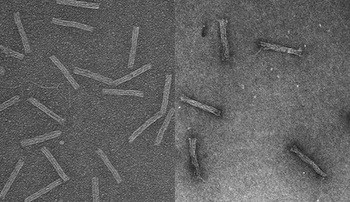
Small, stiff, rectangular rods made using scaffolded DNA origami bypass drug resistance mechanisms in the membranes of a cultured leukemia cell line and release enough therapeutic drug to kill the cancer cell.
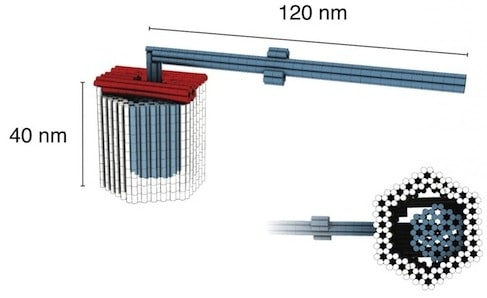
A rotor with DNA origami parts held together by an engineered tight fit instead of by covalent bonds can revolve freely, driven by Brownian motion and dwelling at engineered docking sites.
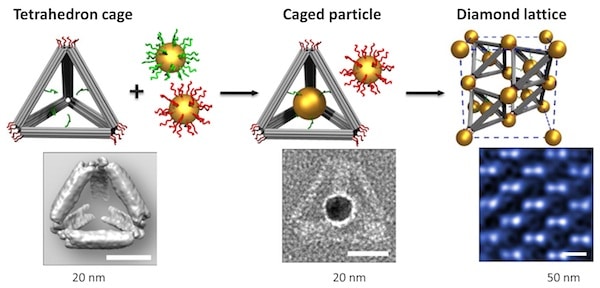
Two research teams present two different methods for using single strands of DNA to link various nanoparticles into complex 3D arrays: one using DNA hairpins for dynamic reconfiguration and the other using a DNA origami scaffold.

Encapsulating enzymes in nanocages engineered using structural DNA nanotechnology increases enzymatic digestion and protects enzymes from degradation.
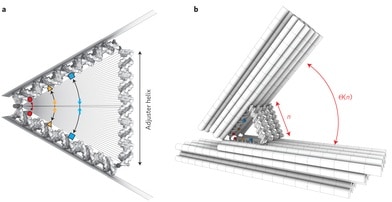
German researchers have used scaffolded DNA origami to adjust the angle of a DNA hinge joint by altering the length of special “adjuster helices”, causing molecules attached to the sides of the hinge to be displaced by as little as 0.04 nm.

Nanobreadboards made of DNA bricks provide twice the positional precision, twice the packing density, and faster prototyping than do alternative means to arrange functional molecules.

Recent research demonstrates that certain non-aqueous solvents can not only be used to assemble DNA nanostructures, but offer certain advantages over conventional aqueous solvents.
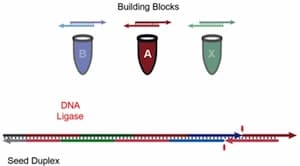
Using the enzyme DNA ligase and small DNA strands as building blocks provides an efficient and less expensive path to a large variety of DNA scaffolds and other structures.

Programmed assembly and disassembly of rigid 3D DNA origami objects has been achieved by designing complementary surface shapes based upon weak stacking interactions to create simple nanomachines.